2022 Summer Reading Guide

Great reads about supply chain and logistics are not all textbooks and white papers. Browse this collection of books, research, and guides that will boost your knowledge and keep you turning the pages.
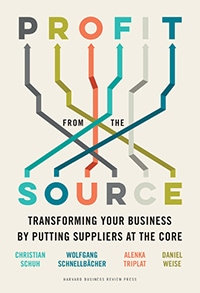 Profit from the Source: Transforming Your Business by Putting Suppliers at the Core
Profit from the Source: Transforming Your Business by Putting Suppliers at the Core
By Christian Schuh, Wolfgang Schnellbacher, Alenka Triplat, and Daniel Weise
The authors, all Boston Consulting Group thought leaders, offer a wake-up call that procurement should be regarded in a new light because it has the potential to be a CEO’s secret weapon in today’s fast-moving, disruptive times. With vivid stories and in-depth case studies, the authors illustrate that no other business function offers the same holistic view of a company—from suppliers to consumers.
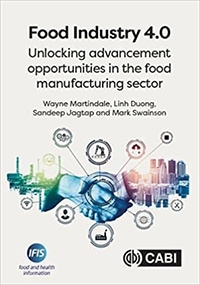 Food Industry 4.0: Unlocking Advancement Opportunities in the Food Manufacturing Sector
Food Industry 4.0: Unlocking Advancement Opportunities in the Food Manufacturing Sector
By Wayne Martingale, Linh Duong, Sandeep Jagtap, and Mark Swainson
Food is the most vital global industry; as a result, it requires immense manufacturing and supply chain resources. Food Industry 4.0 explores the various opportunities for innovation in food products, processes, and services such as automation and robotics, Internet of Things methodology, cybersecurity, sustainability, and supply chain resiliency in the face of unprecedented events. The authors provide support for why three aspects—consumer health and wellbeing, product/process sustainability, and digitalization advancements—could revolutionize the food sector if implemented correctly.
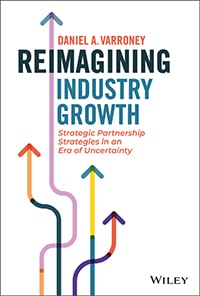 Reimagining Industry Growth: Strategic Partnership Strategies in an Era of Uncertainty
Reimagining Industry Growth: Strategic Partnership Strategies in an Era of Uncertainty
By Daniel A. Varroney
Daniel A. Varroney, president and founder of Potomac Core, provides a complete blueprint for strategic partnerships, showing readers how to leverage relationships for industry and trade associations. This book explores why investing in these mutually beneficial relationships can protect companies from downturns, mitigate risk, and even transform entire market sectors for sustained, augmented growth. Readers will benefit from exploring case studies in five distinct areas of industry and will also find practical roadmaps for immediate application in their businesses.
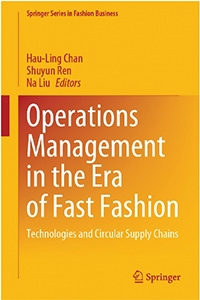 Operations Management in the Era of Fast Fashion: Technologies and Circular Supply Chains
Operations Management in the Era of Fast Fashion: Technologies and Circular Supply Chains
By Hau-Ling Chan, Shuyun Ren, Na Liu
This book reports on the fast fashion supply chain, investigating its circular nature and its issues with sustainability. It helps readers explore a path toward fast fashion environmental sustainability via empirical and quantitative analytical studies, and uses key retail players such as H&M, Uniqlo, Zara, and others to illustrate current efforts toward a zero-landfill business model. The book also provides important managerial insights, sustainable operations management practices, and other pragmatic tools for a sustainable circular supply chain.
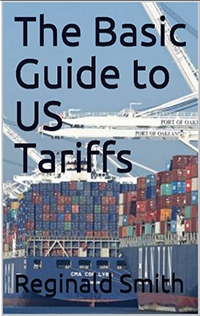 The Basic Guide to U.S. Tariffs
The Basic Guide to U.S. Tariffs
By Reginald Smith
In the increasingly global supply chain, it is more important than ever to have a firm understanding of tariff policies and procedures. You’ll find it in this guide, which explains U.S. tariffs including the basics of HTS codes, classifications, exclusions, duty drawbacks, cost savings, and much more, This book is designed for purchasing, supply chain, finance, and general management readers interested in learning how U.S. tariffs function and how to navigate through them for organizational advantage.
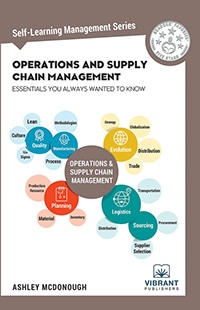 Operations and Supply Chain Management: Essentials You Always Wanted to Know
Operations and Supply Chain Management: Essentials You Always Wanted to Know
By Ashley McDonough
The author uses plain and pragmatic language to help readers understand operations management and logistics. This book is a valuable tool for those interested in acquiring a basic understanding of concepts as well as those looking for specific examples through planning, control systems, procurement, purchasing, sourcing, manufacturing, quality assurance, and distribution. Using the production of scissors as an example, McDonough lays out the complete operations and supply chain pipeline.
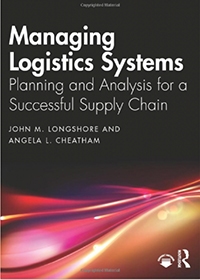 Managing Logistics Systems: Planning and Analysis for a Successful Supply Chain
Managing Logistics Systems: Planning and Analysis for a Successful Supply Chain
By John M. Longshore and Angela L. Cheatham
This textbook is intended for business, engineering, logistics, and supply chain students, as well as in-the-field logistics and supply chain management practitioners. It provides a detailed reference to all activities throughout the product and service lifecycle, physical supply and distribution methodology, and corresponding maintenance and support needed for smooth operation. The text emphasizes business as a “system” managed by logistics, and recognizes the mutual interdependence of an organization’s functional components that can be optimized using a business system design process. Online resources such as an instructor’s manual, glossary of terms, and exams are included.
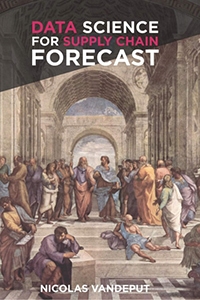 Data Science for Supply Chain Forecast
Data Science for Supply Chain Forecast
By Nicolas Vandeput
The second edition of Data Science for Supply Chain Forecast offers more content on the use of data science to accurately forecast demand before it arrives. With four new chapters including an introduction to neural networks, this hands-on guide covers the most up-to-date forecasting tools to benefit supply chain practitioners and analysts interested in demand planning. The author shows how experimentation, observation, and constant questioning of supply chain data help achieve excellent demand forecasting. The book is an asset for professionals looking to understand how to leverage data collection and analysis for future growth using do-it-yourself Python implementations, Excel statistical models, forecast model constructions, and more.
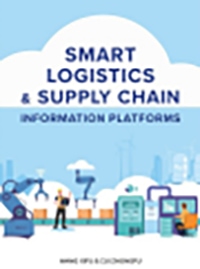 Smart Logistics & Supply Chain Information Platforms
Smart Logistics & Supply Chain Information Platforms
By Wang Xifu and Cui Zhongfu
This book describes the state of China-based smart logistics and its future objectives in the supply chain sector. The smart logistics platform is a key part of China’s upgrade strategy to its rapidly modernizing economy, and this guide illustrates how the country is using artificial intelligence, Internet of Things, blockchain, big data, and other cutting-edge tools to propel logistics into the modern era.
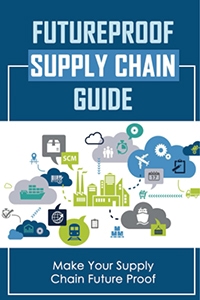 Futureproof Supply Chain Guide: Make Your Supply Chain Future Proof
Futureproof Supply Chain Guide: Make Your Supply Chain Future Proof
By Letty Silovich
This manual investigates 12 dangers to modern supply chains, and explores how organizations and people can prepare their industries for future interruptions. The author organizes clarifications, stories, and illustrations to provide coherence to what is otherwise an overwhelming task of future-proofing inventory networks. The goal of this guide is to help readers visualize the rapid onset of mechanical and computerized advancements in the supply chain, and learn how they can make these advancements work for inventory network elements, not against them.
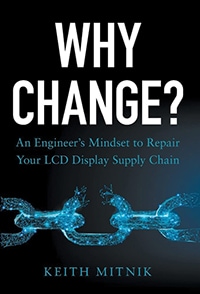 Why Change? An Engineer’s Mindset to Repair Your LCD Display Supply Chain
Why Change? An Engineer’s Mindset to Repair Your LCD Display Supply Chain
By Keith Mitnik
Keith Mitnik, engineer and CEO of Phoenix Display, introduces a systematic approach to supply chain management using the example of electronics component supply chains. Understanding why changes in business relationships can offer new opportunities instead of viewing them as net losses is vital to reducing complacency, conquering longstanding issues, and innovating supply chains for long-term success. The author offers five problems that derail supply chains and provides actionable steps to produce customized solutions using the problem-oriented engineering mindset.
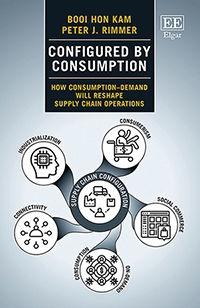 Configured by Consumption: How Consumption-Demand Will Reshape Supply Chain Operations
Configured by Consumption: How Consumption-Demand Will Reshape Supply Chain Operations
By Booi H. Kam and Peter J. Rimmer
This book reflects on the production-consumption cycles that punctuate supply chain operations and examines how logistics has evolved with consumer culture. The authors explore consumerism, consumption on demand, technological connectivity, omnichannel retailing, and social commerce to construct a general theory of supply chain operations and show where the physical supply chain meets digital commerce. This guide is invaluable to students, economists, and decision-makers at all levels of the supply chain by offering insights on current trends and offering forecasts of further technological advancements beyond automation, robotics, and artificial intelligence.
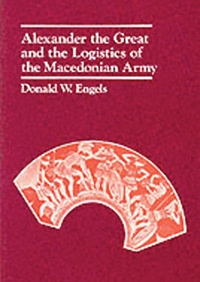 Alexander the Great and the Logistics of the Macedonian Army
Alexander the Great and the Logistics of the Macedonian Army
By Donald W. Engels
Engels’ book details the logistical genius of Alexander the Great and how not just his army —but his supply chain—helped him conquer antiquity. Through archeological and geological analysis, this book explains exactly how the Macedonian general-king led a 50,000-man army—plus 15,000 engineers, doctors, cooks, entertainers, scientists, craftsmen, and servants and at least 10,000 horses and mules—over 22,000 miles of extremely difficult terrain, all with no modern communication or amenities. Though historical in nature, this book helps readers visualize the enormity of Alexander’s logistical problems and how he and his army tackled them as they marched through Asia, providing still-relevant praxis for modern-day logistics endeavors.
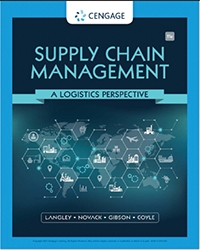 Supply Chain Management: A Logistics Perspective
Supply Chain Management: A Logistics Perspective
By C. John Langley, Robert A. Novack, Brian J. Gibson, and John J.Coyle
The 11th edition of this manual provides the latest content on emerging issues, technological advancements, and global changes in the evolving field of supply chain management. New profiles on real organizations and people offer relevant examples of how businesses are approaching the continual pressure to modernize their supply chains. The book also includes short case studies of hands-on managerial experiences that help readers understand the circumstances behind key decisions that are made daily. This book is an easy-to-follow and interesting take on logistics theory in action.
